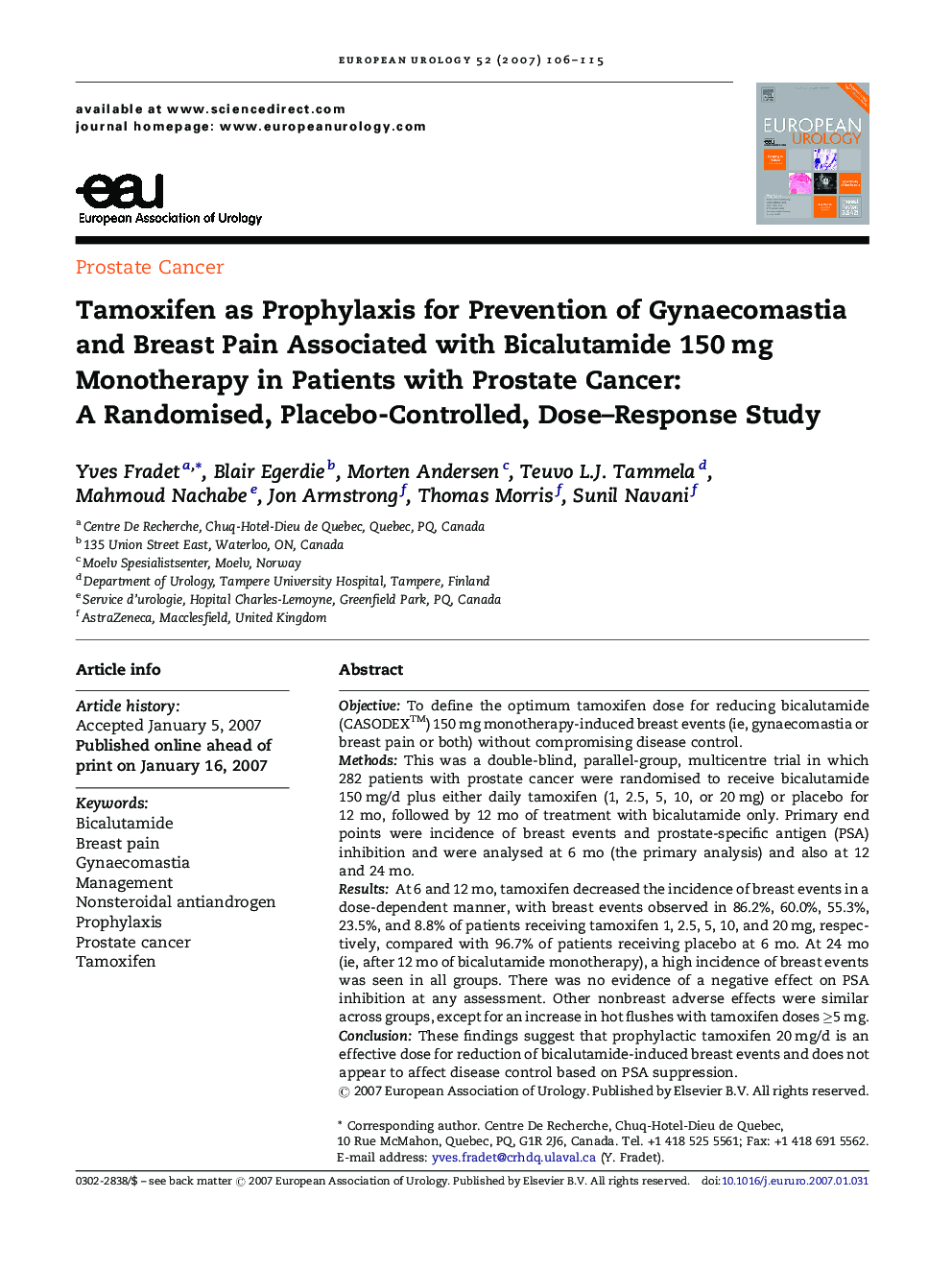| Article ID | Journal | Published Year | Pages | File Type |
|---|---|---|---|---|
| 3926306 | European Urology | 2007 | 10 Pages |
ObjectiveTo define the optimum tamoxifen dose for reducing bicalutamide (CASODEX™) 150 mg monotherapy-induced breast events (ie, gynaecomastia or breast pain or both) without compromising disease control.MethodsThis was a double-blind, parallel-group, multicentre trial in which 282 patients with prostate cancer were randomised to receive bicalutamide 150 mg/d plus either daily tamoxifen (1, 2.5, 5, 10, or 20 mg) or placebo for 12 mo, followed by 12 mo of treatment with bicalutamide only. Primary end points were incidence of breast events and prostate-specific antigen (PSA) inhibition and were analysed at 6 mo (the primary analysis) and also at 12 and 24 mo.ResultsAt 6 and 12 mo, tamoxifen decreased the incidence of breast events in a dose-dependent manner, with breast events observed in 86.2%, 60.0%, 55.3%, 23.5%, and 8.8% of patients receiving tamoxifen 1, 2.5, 5, 10, and 20 mg, respectively, compared with 96.7% of patients receiving placebo at 6 mo. At 24 mo (ie, after 12 mo of bicalutamide monotherapy), a high incidence of breast events was seen in all groups. There was no evidence of a negative effect on PSA inhibition at any assessment. Other nonbreast adverse effects were similar across groups, except for an increase in hot flushes with tamoxifen doses ≥5 mg.ConclusionThese findings suggest that prophylactic tamoxifen 20 mg/d is an effective dose for reduction of bicalutamide-induced breast events and does not appear to affect disease control based on PSA suppression.
